It started with an innocuous dinner in a delightful restaurant in Bala High Street called Y Cyfnod, named after the newspaper which was published at that address. Being the sort of town where a lot of people are known socially because of their achievements and occupations, this dinner was deliciously interrupted by several other diners, known and unknown, who came over to say hello and discuss the extension into Bala Town which is progressing apace. All without exception agreed that the new facilities will be an enormous boon to the town, and the upshot of these impromptu chats is what you see below, in Welsh and English, on the fence surrounding the cleared site of the proposed station.
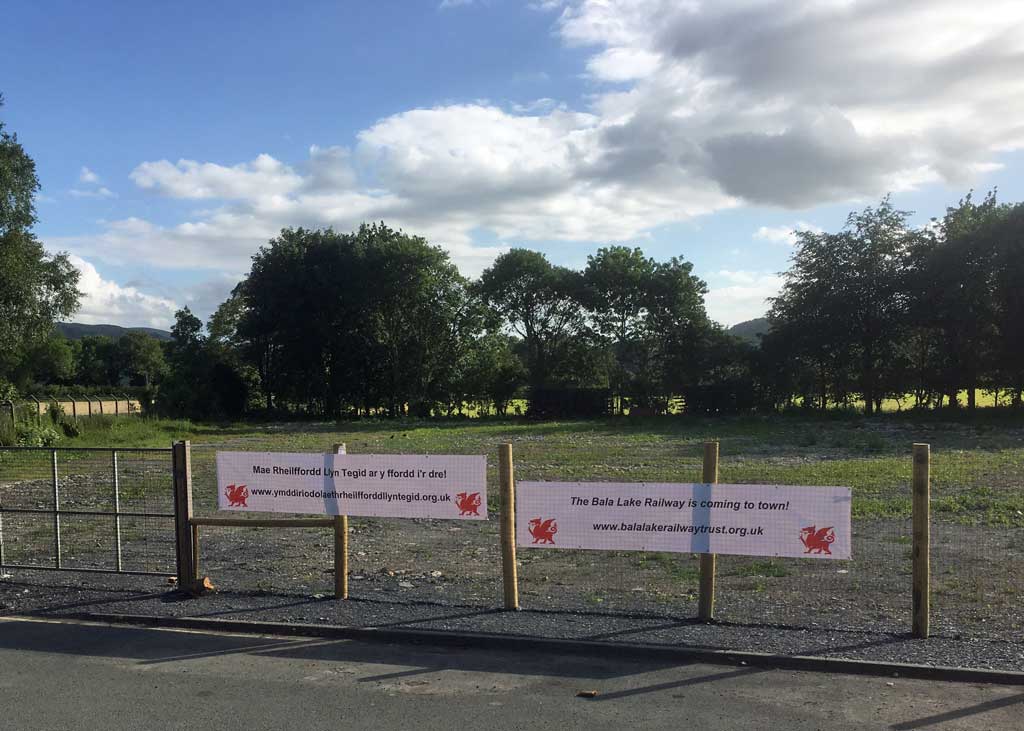
With the whole site cleared and nicely levelled, plus an early delivery of track-work neatly stacked in the corner, this was the most demonstrable exhibition of intent that the railway will arrive in town. There is much to be done in the meantime, but if the cleared site says anything at all, it is that we are not talking about a proposal but deadly serious intent, and the impromptu arrivals at the dinner table were delighted. The Bala Lake Railway means business.
Volunteering is the one aspect of railway life that needs no introduction, as all heritage railways need volunteers to carry out all manner of tasks. At the beginning of the month, we were delighted to welcome Ailith Rutt to the hallowed ranks of fully qualified guards, Ailith being one of the number who joined the BLR, together with her husband David, after the last Volunteer Day, run by Russell Prince and his team.
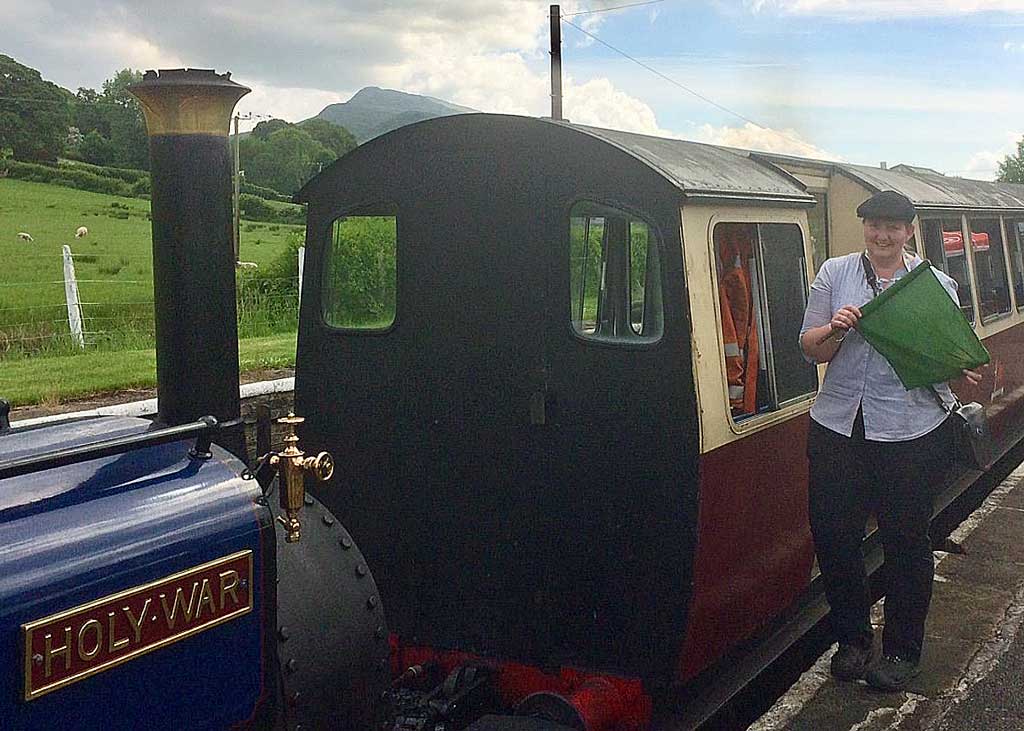
Ailith expressed an interest in becoming a guard, always a position keenly encouraged by the railway, and we were delighted that she rapidly qualified and took control of her first train with great success.
Volunteers cover all manner of tasks and the woes of our R&H diesel Chilmark have been keeping volunteer Mike Roberts busy for quite a while. As previously reported, the erratic running of the big diesel motor has been causing concern and it was eventually found that the bevel gear drive to the injection pump had become severely worn, thus upsetting the fine timing. Mike has been using all his diesel knowledge on this tedious problem, experience built up over many years while running his own transport company, thus he is perfectly placed to deal with the elusive problems that this venerable loco is producing. If anyone can sort it out, he can, and we are grateful for his tenacity. We will report next month on this and other engineering tasks in hand.
We have not mentioned the Penrhyn Coach recently but David Hale has sent his latest update, with the emphasis being on the hand-brake wheel and mounting for the interior of the coach. David takes up the story; “As mentioned previously, making the pedestal and the cap for the brake wheel has taken longer than anticipated, a case of think of a number and double it! As you see from the photos, the assembly is now complete although there are still some metal fittings needed. The original unit in the carriage in the Penrhyn Museum was covered in a black Rexine material which looks untidy, hence I have applied a finish of clear varnish which brings out the grain of the wood”.
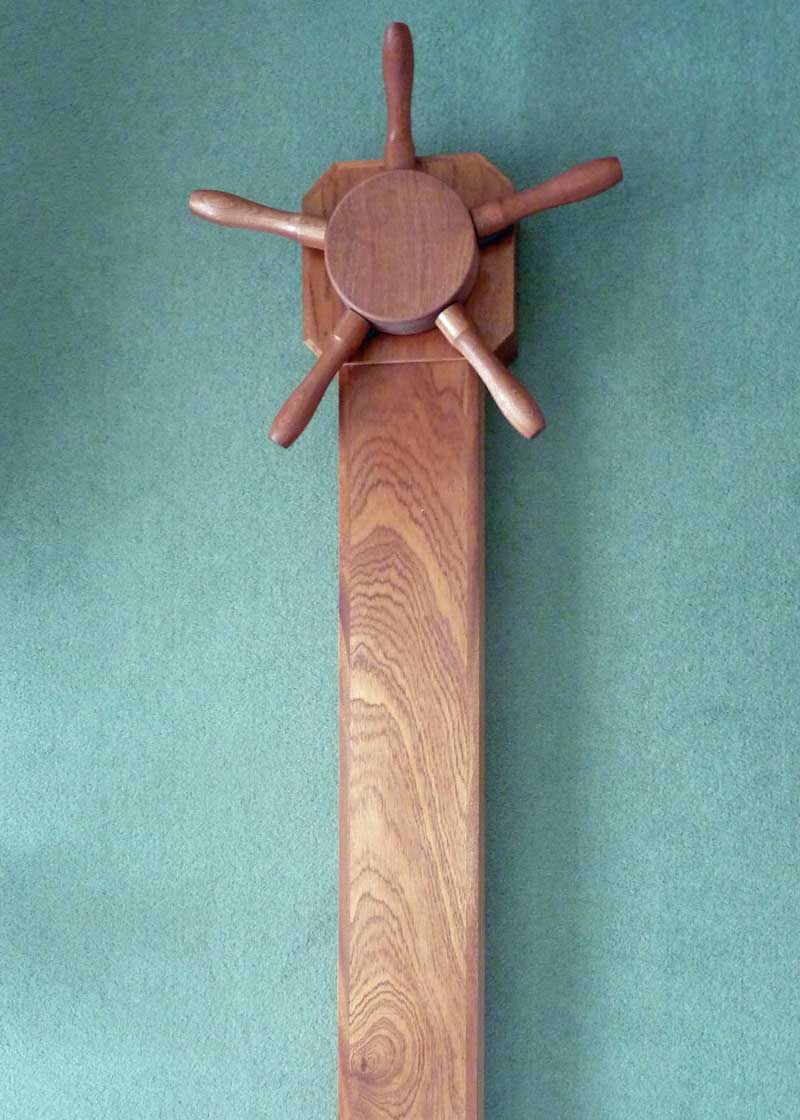
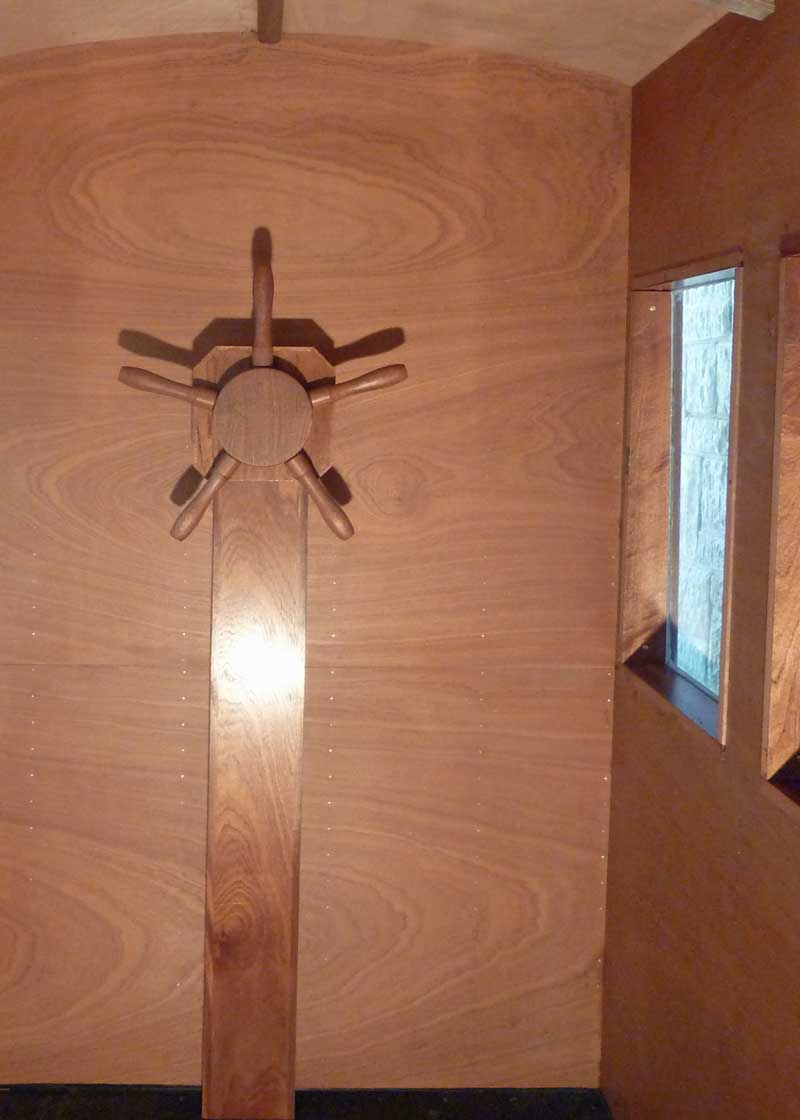
Again, we cannot state too strongly that this is all done by David alone and virtually everything is made by hand. At least this time, we will be able to see and savour his expertise which will not be hidden, unlike so many other facets of this incredible project where nothing is compromised and short-cuts never enter the vocabulary. It is very hard indeed to describe adequately the skill and dedication that is going into making this one-off coach such a unique and spectacular addition to heritage narrow-gauge rolling stock.
June of course was a rather special month for the BLR in that, after the success of the double Model Railway Show and Festival of Transport at the end of May, our Steam Gala on the 16th – 18th was followed immediately by five days of activity with visiting locomotives while our Hunslet fleet departed to enjoy itself on the Festiniog Railway during its Hunslet 125 Festival, this being a perfect example of the perennial good-will and co-operation between Welsh and other railways, particularly those with two feet between the rails.

For our own Steam Gala, we were delighted to welcome Gwynedd, normally based at Bressingham, a sister Penrhyn Quarry loco of the same class as our own Winifred, (their first meeting for 70 years) as well as Marchlyn, now part of the Statfold Barn Trust collection, and a return visit by the National Trust’s Hugh Napier, which regular readers might recall was hurriedly organised to deputise for George B during our gala last August. Needless to say, the traditional BLR practice of ‘multi-heading’ was not omitted from the proceedings, and as we show in the selection of photos from the event, it is difficult to capture the real atmosphere in photos alone. Let the imagination loose.
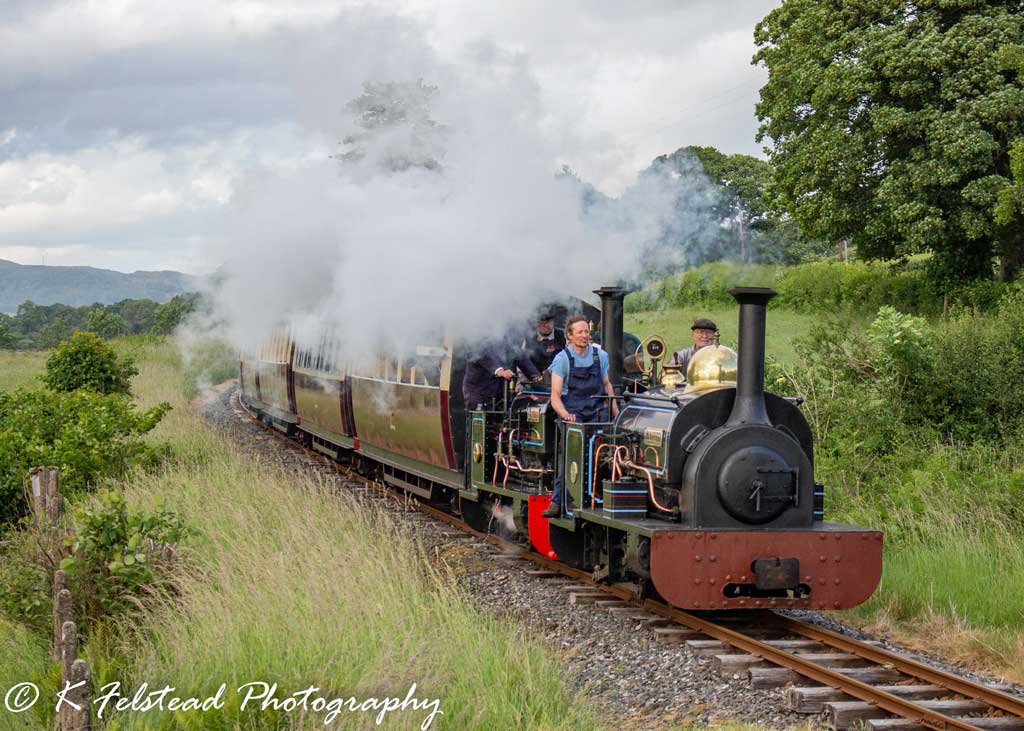

To have one visiting loco is fun, but a famous trio is very special indeed and here we must pay tribute to an aspect of these events that is rarely discussed, that of transporting these wonderful machines from place to place. Our locos went to the FR and others came to Llanuwchllyn with the absolute minimum of fuss, care of James Milner who has rather cornered the market in transporting narrow gauge locos all over the country. His father, Duncan, set up the specialist haulage company and James, together with his brother, Thomas, are continuing the tradition. Bearing in mind that these little delights are no light-weights (six plus tons apiece), the equipment has to be special and the expertise of the highest order.

The articulated low-loader in James’ instance is already fitted with 2 ft. gauge rails, meaning that there is no time wasted in getting suitable track set up on the truck, and it is of the common type of low-loader that splits at the ‘neck’ next to the rear axle of the prime mover, thus only a few inches above ground level. So many movements take place that getting the trailer in the correct position is done with hardly a thought, and let us not forget that most small gauge railways are in decidedly inaccessible locations, but James has yet to be defeated in getting his ‘rig’ through the tiniest of gaps. All fans of heritage railways should spare a thought for the expertise of these unsung heroes of the ‘movement’, and every member of staff, volunteers and anyone involved with heritage railways are most grateful to these vital and unheralded members of the jigsaw.
Whilst James was busy spiriting our engines away, Gwynedd and Marchlyn stayed on a few days to run our regular services, before Gwynedd also joined the increasing gathering at Hunslet 125. Our fleet was extensively used on the FR and our drivers had a great time using locos on rails that climbed a bit more severely than on the languid terrain on the BLR.
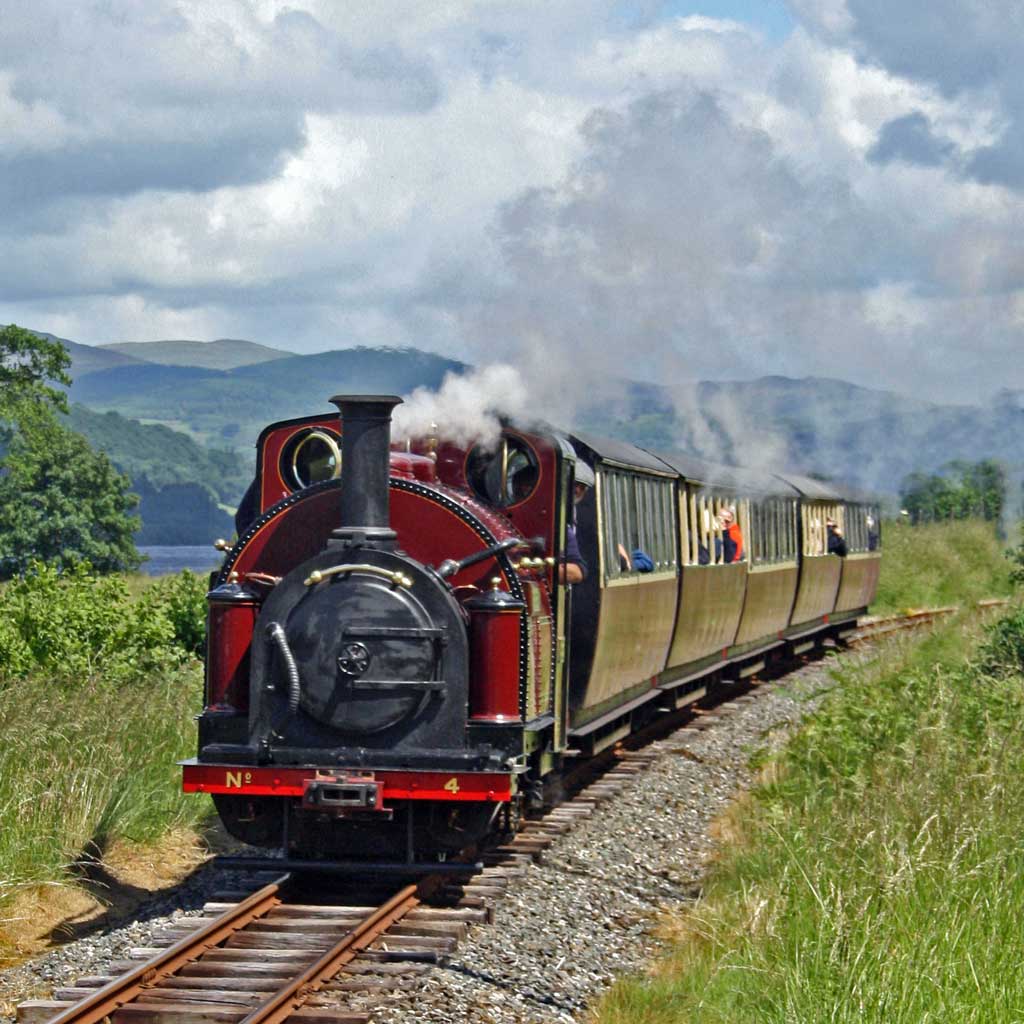
Possibly the biggest attraction at Bala was the arrival of Palmerston, one of the FR’s oldest locos as well as arguably the first tender loco to run alongside Bala Lake since BR days in the 1960s.
Palmerston dealt with the schedule at the end of the week and was hugely admired by crews and visitors alike.
And finally….. we unashamedly include this delightful photo of the BLR pump-trolley, constructed by Dan Laidlaw a while back, which has now ventured far along the line with spectacular views on a perfect summer evening.
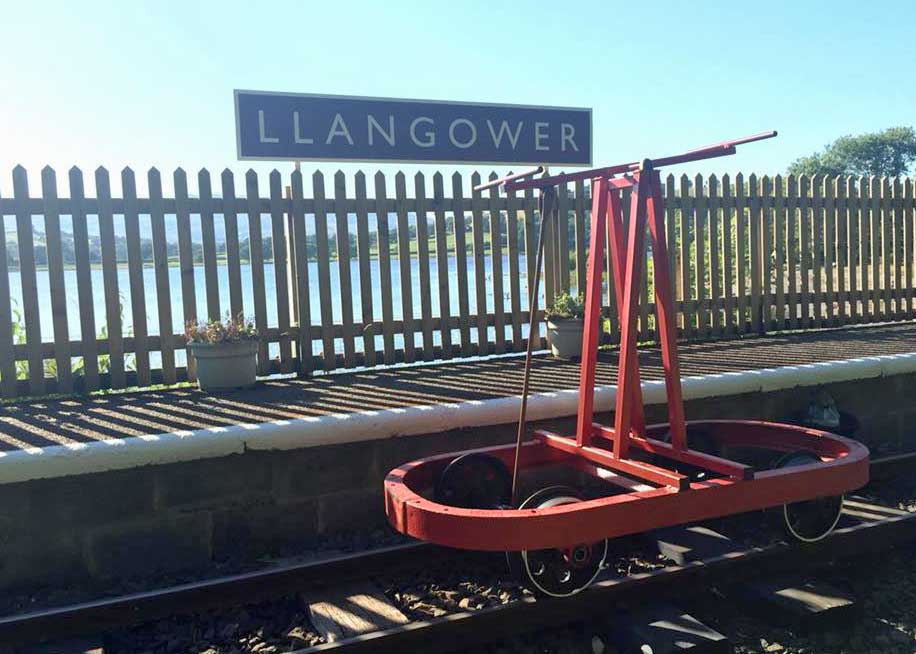
With an untainted, soot-free breeze in one’s face, a gentle action doing wonders for fitness and a different type of rhythmical rattle to accompany progress, what could be better?
